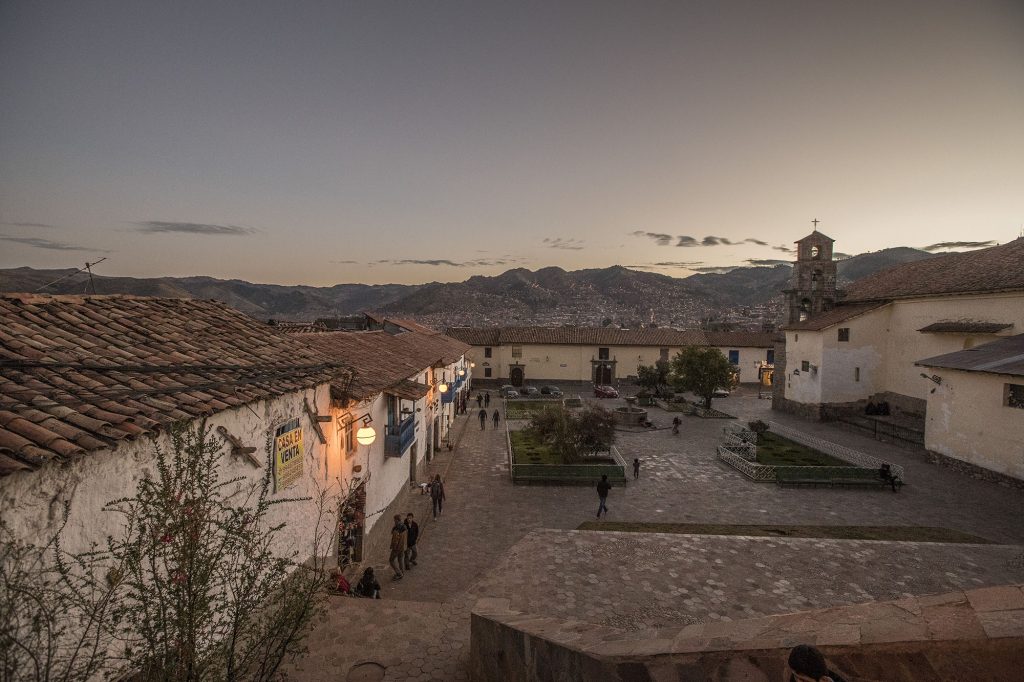
Inca Kola – the remains of an empire
Our tour guide reluctantly showed us Macchu Picchu (the remains of the noble’s city) and explained the significance of the mountains surrounding and the stonework on each building. Being that the recognisable image of MP is the cascade of neat stone buildings surrounded by lush vertiginous mountains, he started there. This Pueblo was inhabited by the nobles of the Inca. The temples and palace are constructed in neat stone blocks, which despite their individual irregularity, fit together perfectly with no need for mortar. This attention to perfect detail was reserved for only holy or royal buildings and all the other structures were simply blocks of stone (granite) held together with a mortar made of clay, llama wool and sand.
The town, this great Inca secret, was kept safe by being in the centre of impenetrable jungle and at the summit of an impossible mountain. Trade routes, walked by hundreds of workers, commoners and now tourists, reach out from the town in all directions. One to Cusco (the now famous Inca trail which takes 5 days walk) and one to each of the neighbouring mountains (and further) where the commoners lived. They would make the long and hard walk to get to the noble’s town in order to fulfill their duties as quasi-slaves to the empire. Fish and tradeable goods from beyond the mountains would be delivered to the town in exchange for coca. The climate is perfect for growing coca leaves in the region, although our tour guide was quick to point out that the government are trying to persuade the coca growers to switch to coffee or cocoa (which requires the same climate). However, we could only see coca plants from our vantage point…

Alex watches over the Pueblo of Macchu Picchu
Our tour guide, the least charismatic of his kind, finally perked up when we reached the Palace. “Have you drunk and Inca Kola?” he asked us suddenly. Caught off guard by his sudden slight exuberance, we nodded, recalling with slight nausea the sickly sweet and fluorescent yellow drink we’d suffered a few days back. Encouraged by our nod he beamed “What do you think the name means? It is a great honour!” Our silence clearly delighted him as he explained that ‘Inca’ means ‘King’ and ‘Kola’ means ‘Queen’ so the last nod to a great and proud empire comes in the form of a Coca-Cola owned drink, which the clever marketing types have managed warp. Sadly, the drink was not to either of our tastes so we considered it a pretty sad monument to the Inca.
Anyhow, Macchu Picchu is well worth a visit despite the HOARDS of tourists which rather ruin the scale of the town and the constant need to move on to allow others to inspect a temple or a sundial mean little of the peace or majesty is impressed on the viewer. The guides bossily direct you around the site and differ in quality. We longingly observed a young guide who was animatedly sharing legends with his enthralled tourists as our guide picked his way across some steps, waved to a temple and simply pointed out the relevance of Earth (Pachamama), Water, Air and Sun as the four main elements revered by the Inca. He went on to explain the three tiers or kingdoms of the Inca- The God-realm or skies, protected by a Condor, the human realm, protected by the Puma and the underworld, protected by a Snake. After some encouragement and leading questions from Simon, he also put into context the current struggle between the existing descendants of the Inca, the significance of Gold and the loss of their culture and heritage to the normalisation of South American culture, modern trade and tourism. Just as the conversation seemed promisingly interesting, he waved goodbye and left us to explore the remainder of Macchu Picchu on our own.

Taking the early morning train to Aguas Caliente

Some granite stonework
We decided to waive the bus trip back to Aguas Caliente, instead choosing to walk the 4km down the mountain trail. The route winds through the mountain and offers views of the valley and some exercise! Although a majestic site and well worth the visit, it’s a victim of its own success. Initially reserved for the hardiest backpacker with only a few hundred visits per day, it now clocks in thousands per day. Our advice would be not to be sucked in to the tourist offices organising trips and guides as it becomes awfully expensive. Instead, book your $60 return train ticket yourself, book your $40 entrance fee and the $10 bus fee all on your own and enjoy a leisurely stroll around Macchu Picchu with an audio guide. And don’t drink Inca Cola, I’m not certain what naturally occurring herb grows to such a violent fluorescent yellow but it can’t be good for you! It was with a little sadness that all the small villages we passed through, where a loaf of bread costs 12p, the only drink you could buy as an alternative to water was Coca-Cola or Inca Cola with a preference for the latter. Gleaming yellow liquid filled lone sponsored fridges, incongruous next to open packages of bread where you could buy a single small roll as a whole pack would be too much on a peasant wage. In this part of the world, you can drink anything as long as it’s made by the famous beverage brand.

Walking down from Macchu Picchu

The train on the way to the hydro-electric dam

Some local cuisine… Simon remembers his pet guinea pig with sadness at the lost opportunities.
